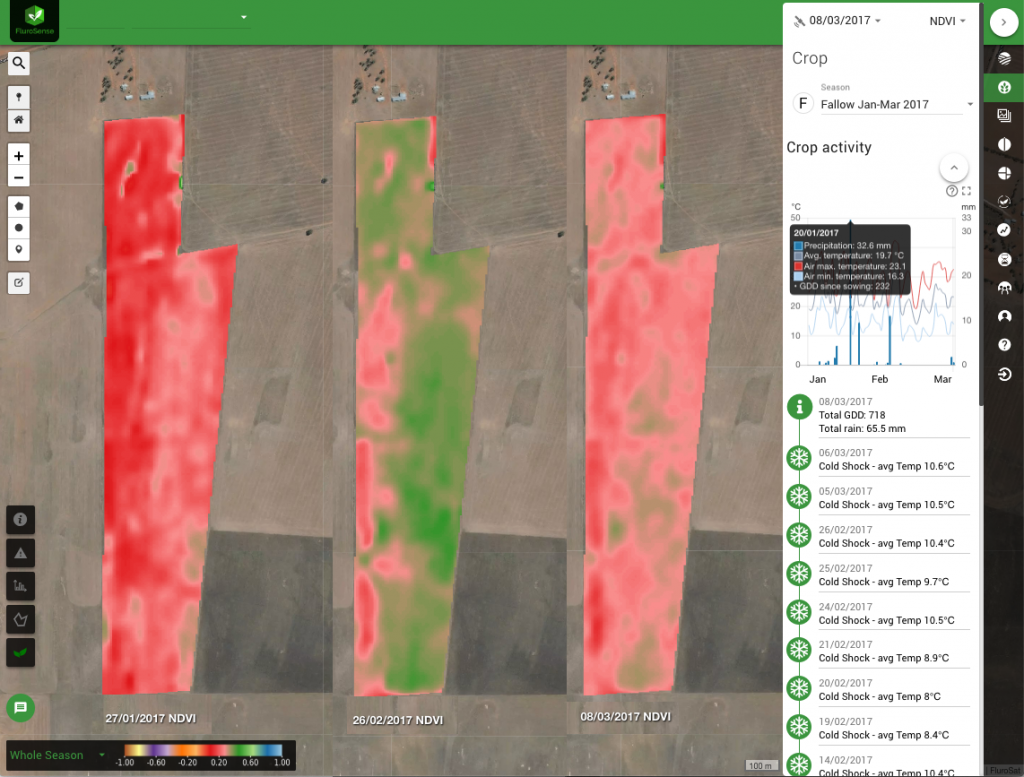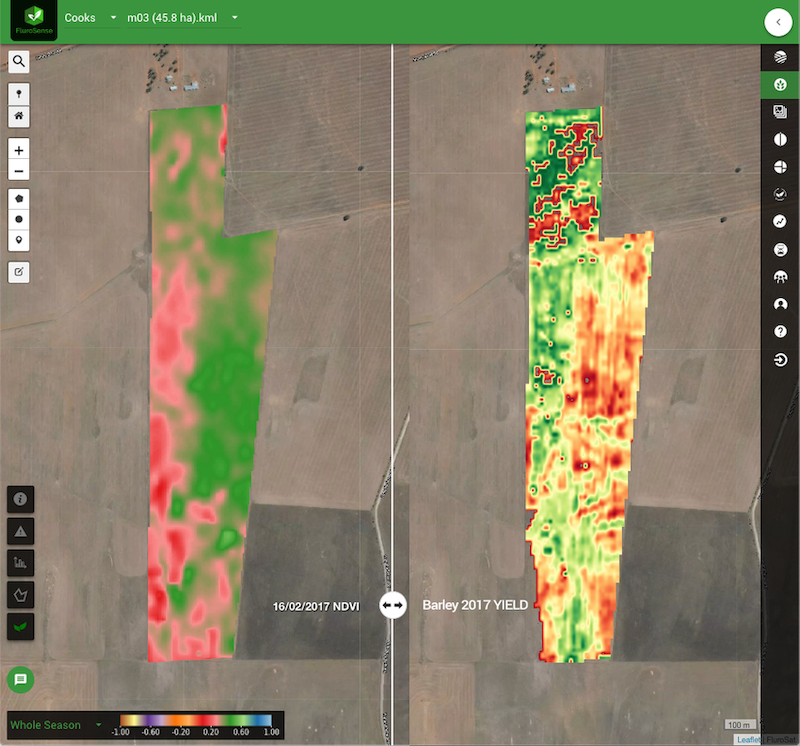Weeds cost Australian agriculture an estimated $2.5 billion in lost production as well as an additional $1.5 billion in weed control costs [1]. They compete with commodity crops for nutrients, water and sunlight, reducing yield size and quality. Increasing resistance to herbicides and the regulatory restriction of chemical use makes it imperative that farmers are able to spot and eradicate weeds more efficiently.
Weed control begins pre-season with fallow spraying, tilling, mulching or burning [3]. These methods are typically applied uniformly across each field as identifying and targeting individual outbreaks is time-consuming and imprecise. Additional control can occur post-emergence usually by applying herbicides. Once a crop has been established, identification and control of weeds can become more difficult as densely sown crop canopies obscure any weeds.
Using FluroSense, farmers can detect weed outbreaks and target control both during fallow and early crop development. Targeting herbicide only on weed-infested areas rather than uniformly across the field reduces the cost and risk of chemical contamination through leaching and spray drift.
The FluroSense screen below shows three stages of weed growth. On the left - fallow field with no vegetation. In the middle - the weeds that have come out after significant rain (rain totals and weather is shown in the side panel). The weeds have been controlled by the grower and the dye-back (almost bo green areas with high biomass left) can be seen in just a few weeks.

FluroSense improves the currently most common method of weed identification by physically scouting each field and estimating the percentage of ground covered by weeds. Machine learning algorithms can be applied to multispectral data to automatically measure the extent and severity of infestation by locating vegetation in fallow fields or in the rows between planted crops.
Farmers can use FluroSense either to guide spot spray outbreaks via GPS, or generate zones based on average weed coverage for variable rate application across the entire field. Studies have shown that variable-rate herbicide applications can reduce herbicide costs by 30% while retaining weed kill effectiveness [4].
In the example above, although the weeds were controlled, the effect their emergence had on the yield was significant (see image on the right in the figure below). The difference between the barley yield in areas in green (3.24 t/ha) and in red (1.26t/ha) is as high as 2 tons per hectare.

With weed control costing Australian grain growers an average of $146 a hectare in costs and lost yields [3], a $5 per hectare investment in a FluroSense subscription could return the grower $50 per hectare, an ROI of 5X.
An additional, indirect but industry-wide benefit of reducing herbicide tolerance could also be achieved through limiting the current over-application. With growing community resistance [5], and potential government [6] restriction, to the use of glyphosates, in particular, there would be a social license benefit to reducing use within the agriculture industry.
For more information on the use of FluroSense for weed tracking and management and the ROI case study, you can access the brochure here.
References
[1] http://www.environment.gov.au/biodiversity/invasive/weeds/weeds/why/impact.html
[2] https://grdc.com.au/__data/assets/pdf_file/0027/75843/grdc_weeds_review_r8.pdf.pdf
[3] http://www.environment.gov.au/biodiversity/invasive/weeds/management/index.html
[4] https://www.ars.usda.gov/ARSUserFiles/40820/Thorp2004%20-%20RS-based%20VRT%20apps.pdf
[5] https://www.theguardian.com/environment/2017/nov/27/controversial-glyphosate-weedkiller-wins-new-five-year-lease-in-europe
[6] https://sydney.edu.au/news-opinion/news/2018/10/09/4-reasons-agriculture-needs-to-phase-out-reliance-on-glyphosate.html



